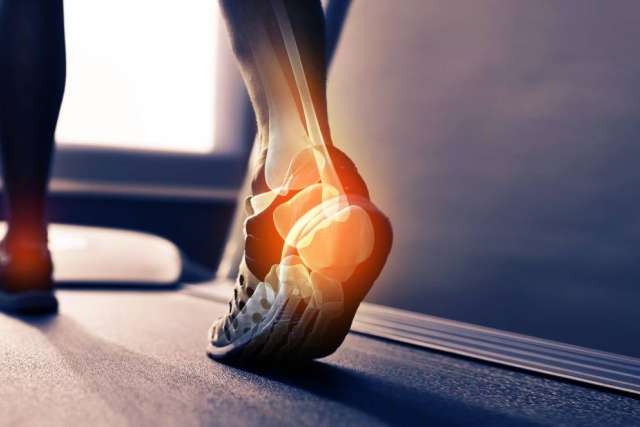What to expect through the Achilles tendon healing process
Dear Doctors: I’m a 30-year-old man, and I play weekend volleyball. Last month, I jumped to spike the ball and heard a “pop.” There was a lot of pain; it felt like getting kicked in the calf. It was a torn Achilles tendon, and now I’m in a cast and on crutches. How else can this be treated? How long is the recovery time for a ruptured Achilles tendon?
Dear Reader: The Achilles tendon connects the back of your heel to your calf muscle. It’s the thickest tendon in the body, designed to withstand high levels of tensile force. It’s thanks to the Achilles that you can flex your foot, which makes it possible to walk, run, leap, jump and stand on tiptoe.
The type of injury you experienced can happen to anyone, and at any age. However, analysis of data from emergency room admissions has shown an increase in Achilles rupture among men in their 30s and 40s, particularly those who sporadically take part in competitive sports. The sequence of events that you described -- from the jump to the audible “pop” to the sudden subsequent pain in the back of your calf -- are a textbook example of an Achilles tendon rupture. But not all injuries to the tendon are as obvious. It’s possible for someone with the symptoms of a strained or sprained ankle to have sustained an injury to the Achilles tendon. They are able to flex their foot and walk, and a manual examination of the ankle may not reveal the gap in the tendon typically associated with a rupture. Yet an injury can be present.
When it comes to Achilles tendon rupture treatment, the options are either a surgical repair or nonsurgical management of the injury. The former can range from a minimally invasive procedure using a scope and a few small stitches, to a so-called “open” repair, with an incision and more extensive suturing.
While surgical treatment is sometimes preferred due to a lower rate of reinjury, it carries complications. These include the potential for nerve injury, post-surgical infection and the risks associated with anesthesia. Nonsurgical treatment is less costly and has a lower complication rate. However, it can leave the individual at increased risk for a subsequent injury.
Nonsurgical repair of a ruptured Achilles tendon begins with rest, keeping the injured foot elevated and taking medications as needed to control pain and inflammation. Another important step is bracing and immobilizing the affected foot. That means positioning the foot at a precisely flexed angle to bring the torn ends of the tendon into optimal proximity. A cast is then used to prevent movement as healing takes place.
Whether treated surgically or nonsurgically, the Achilles tendon healing process typically takes a few months. This includes rehab, which is crucial to a full recovery. Most people who have sustained a ruptured Achilles tendon and get medical treatment have a very good chance of a positive outcome. But some patients, particularly those who were less active before the injury, may be left with a reduced range of motion. It’s important for you to understand that a complete recovery will take time. Please be patient and follow all of your health care provider’s instructions, including rehab.
(Send your questions to askthedoctors@mednet.ucla.edu, or write: Ask the Doctors, c/o UCLA Health Sciences Media Relations, 10960 Wilshire Blvd., Suite 1955, Los Angeles, CA, 90024. Owing to the volume of mail, personal replies cannot be provided.)





